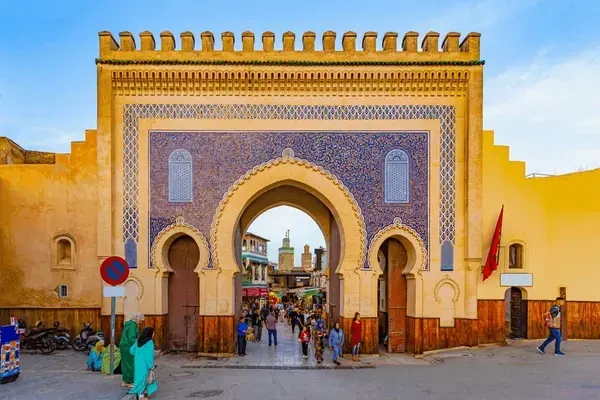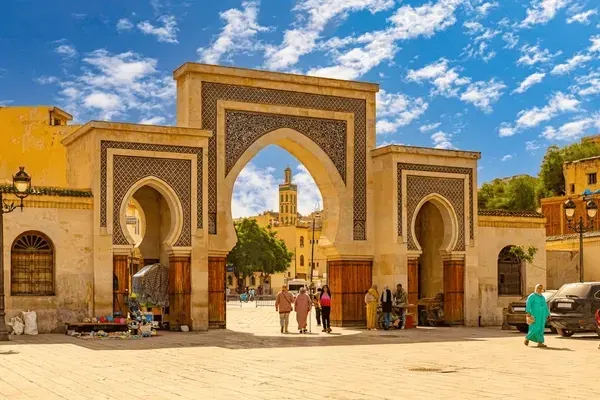Fez, the spiritual and cultural heart of Morocco, is a city that transports visitors back in time. With its labyrinthine medinas, stunning architecture, and vibrant souks, Fez offers an authentic Moroccan experience like no other. Whether you're a history enthusiast, a food lover, or simply an explorer, this city promises an unforgettable journey.

Fes (or Fez), Morocco’s oldest imperial city, is a labyrinth of history, culture, and sensory adventures. A UNESCO World Heritage Site and the country’s spiritual capital, Fes offers an unfiltered glimpse into medieval Morocco. From its labyrinthine medina to its vibrant souks and ancient tanneries, this city is a treasure trove for travelers seeking authenticity. Here’s your comprehensive guide to unlocking the magic of Fes.
Why Fez? The Soul of Morocco
Founded in the 9th century, Fes has preserved its medieval charm like no other city. Divided into Fes el-Bali (Old Fes) and Fes el-Jdid (New Fes), it’s a living museum where donkeys still tread narrow alleys, artisans craft goods using centuries-old techniques, and the call to prayer echoes over terracotta rooftops. Fes is not just a destination—it’s an immersive experience.
Top Attractions in Fes
1. Fes el-Bali: The World’s Largest Medina
Step into Fes el-Bali, a UNESCO-listed medina with over 9,000 alleys. This car-free maze is a sensory overload:
Chouara Tannery: Witness leather dyeing in earthen pits using methods unchanged since the 11th century. Locals offer mint to counter the pungent smells—opt for a rooftop view for stunning photos.
Al-Qarawiyyin Mosque & University: Founded in 859 AD, it’s the world’s oldest continuously operating university. Non-Muslims can glimpse its marble courtyards through ornate gates.
Bou Inania Madrasa: A 14th-century theological school adorned with zellige tiles, carved cedarwood, and a green-minaret mosque. Open to non-Muslims, it’s a masterpiece of Marinid architecture.
2. Architectural Marvels
Royal Palace (Dar al-Makhzen): Though closed to the public, its golden doors and mosaic walls are iconic photo spots.
Al Attarine Madrasa: A smaller but equally stunning madrasa near the spice market, featuring geometric tilework and serene courtyards.
Nejjarine Museum of Wooden Arts: Housed in an 18th-century caravanserai, it showcases Morocco’s woodcarving traditions.
3. Panoramic Views & Hidden Gems
Marinid Tombs: Hike to these 14th-century ruins for sunset views over the medina.
Jnan Sbil Gardens: A tranquil oasis in the medina with palm-lined paths and water features.
Seffarine Square: Watch coppersmiths hammering traditional wares in this lively artisan hub.
Cultural Experiences
1. Souks & Artisan Workshops

Fes’ souks are a kaleidoscope of colors and crafts:
Souk el-Attarine: A spice market brimming with saffron, cumin, and argan oil.
Souk el-Henna: Discover natural dyes and traditional cosmetics.
Carpet Souks: Bargain for handwoven Berber rugs in shops brimming with vibrant textiles.
2. Culinary Delights
Moroccan cuisine shines in Fes:
Café Clock: A trendy spot for camel burgers, avocado smoothies, and rooftop sunset views.
Street Food: Savor b’ssara (fava bean soup), harira (lentil stew), and fresh orange juice from medina stalls.
Ruined Garden Restaurant: Dine under climbing vines in this whimsical garden with resident cats and turtles.
3. Traditional Riads
Stay in a riad—a Moroccan guesthouse with courtyards and rooftop terraces:
Riad Fes: Luxury with Andalusian gardens and a spa.
Dar Seffarine: A budget-friendly 14th-century gem near the tanneries.
Practical Tips for Travelers
1. Getting There & Around
By Air: Fly into Fes-Saïss Airport, located 17km from the city. Taxis are readily available.
By Train: Direct routes connect Fes to Marrakech, Casablanca, and Chefchaouen.
Walking: The medina is best explored on foot. Use offline maps to navigate its winding alleys.
2. Safety & Etiquette
Dress Modestly: Cover shoulders and knees to respect local norms.
Bargain Wisely: Vendors may overcharge tourists; polite haggling is expected.
Avoid Night Walks: Stick to well-lit areas outside the medina after dark.
3. Best Time to Visit
Spring (March–May) and Autumn (September–November): Mild weather and fewer crowds.
Avoid Summer: Temperatures often soar above 40°C (104°F).
Unique Experiences
Sunset Rooftop Tea: Sip mint tea while the call to prayer echoes across the city.
Fes Festival of World Sacred Music: A June highlight featuring global artists.
Day Trip to Meknes & Volubilis: Explore Roman ruins and another imperial city.
Final Thoughts: Why Fez Stands Out
Fez is more than a destination—it’s a journey through time. Unlike Marrakech’s polished charm, Fes offers raw authenticity, where every alley tells a story. Whether you’re haggling in the souks, marveling at medieval architecture, or savoring tagine under the stars, Fes leaves an indelible mark on the soul.
Plan your trip now and let Fes weave its magic into your travel memories.



